Preparing for an attack by Russia, Zaporizhzhia’s residents cannot escape the threat of nuclear disaster
Kyiv believes Moscow is setting up to strike Europe’s largest power plant, which it occupies. Bel Trew in Nikopol – mere miles from the facility – finds everyone planning for the ‘worst case scenario’

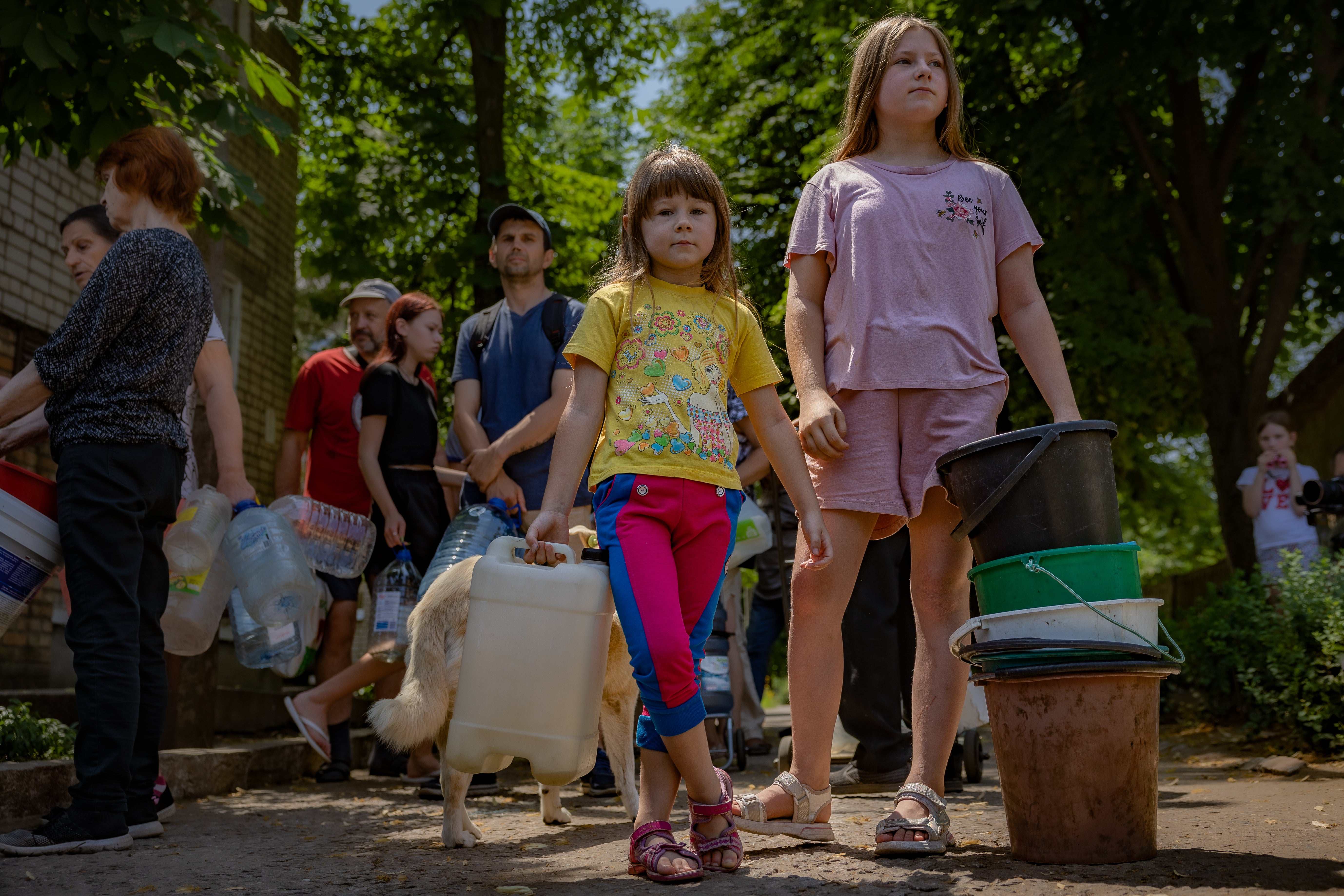
Europe’s largest nuclear power plant shimmers ominously across the cracked earth of the dry reservoir in south Ukraine.
Deep fissures in the dry river beds are all that separate Ukrainian-held territory from Russian-controlled reactors. It is a violent reminder of the last crisis to befall this war-blasted corner of Ukraine and is a warning of a potential future one.
The explosion of the Russian-controlled Nova Kakhovka dam last month, an attack Kyiv blames on Moscow (the Kremlin denies the allegation), unleashed the waters of Europe’s biggest reservoir over cities, towns and villages, causing one of the worst ecological disasters on the continent in recent history.
Here in Nikopol, upstream of the dam, the drained reservoir robbed everything of live-giving water, leaving nearly three-quarters of a million without access to clean drinking water, and turning agricultural lands to dust.
Now Kyiv claims Moscow is poised to strike this area again. This time blowing up the nearby occupied Zaporizhzhia nuclear power plant, which could disperse radiation through Nikopol, parts of Ukraine, and possibly to neighbouring countries.
“We have a plan for the worst-case scenario,” says Saiuk Oleksandr, Nikopol’s mayor, from his office in the city that lies less than 10 miles from the Russian-held nuclear power plant.
“Look, of course, it’s all catastrophe but the city keeps living,” he adds grimly. “People keep working. Despite it all, we have no choice.”
Further north in Zaporizhzhia city at the headquarters of a major regional ministry of health laboratory, its chief Taras Tyshchenko, says his teams are on high alert, testing air and water for radiation several times a day.
“The Russians proved they can go there when they blew up the Kakhovka dam. Now anything is possible,” he tells The Independent as his teams test for radiation and other contamination in the background.
“President Zelensky has warned that the nuclear plant is mined. And so we are in a constant, intensified mode of work.”
Late Tuesday the president claimed new Ukrainian intelligence “show objects resembling explosives” being attached to the top of several power units to “simulate” an attack as part of a false flag operation.
He called on “everyone in the world to stop it”.
“No one can stand aside, as radiation affects everyone,” he said.
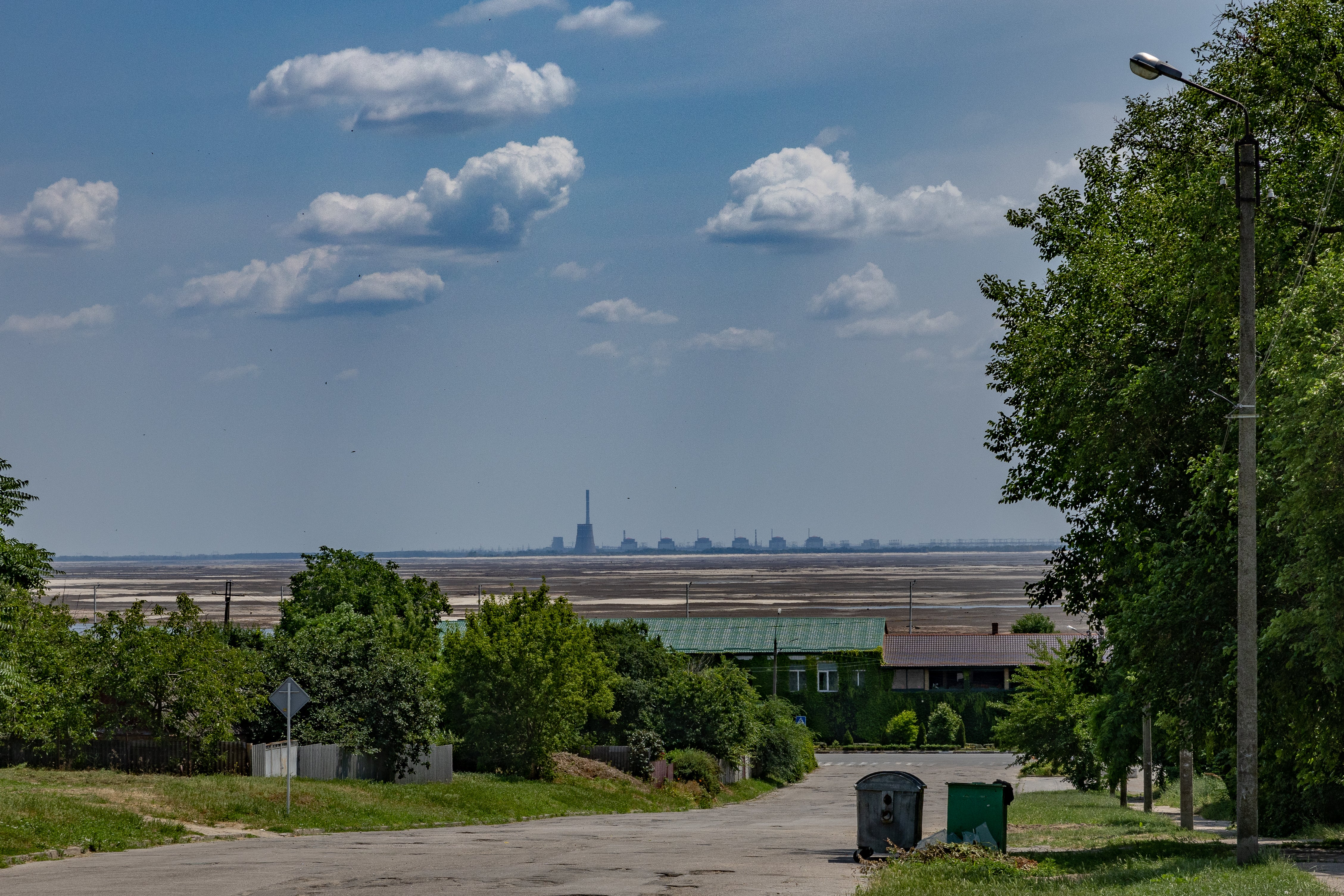
Ukraine’s military explained that “foreign objects” were placed on the roof of the plant’s third and fourth power units. “Their detonation should not damage power units but may create a picture of shelling from Ukraine,” they said.
Russia, which in May evacuated more 1,500 people from around the plant, has vehemently denied the accusations and instead accused Ukraine of playing a “dangerous game” by trying to cover up its own imminent attack. Russian media on Tuesday alleged Ukraine’s military planned to strike the plant early Wednesday with ammunition laced with nuclear waste. As of Wednesday afternoon, there was no indication of such an attack.
“There is a great threat of sabotage by the Kyiv regime, which can be catastrophic in its consequences,” Kremlin spokesman Dmitry Peskov said.
The Zaporizhzhia nuclear power plant has long been one of the most alarming flashpoints of the 16-month war.
The six-reactor complex, Europe’s biggest nuclear plant, was occupied by Russian forces shortly after President Vladimir Putin launched his invasion of Ukraine in February last year.
The two sides have accused each other of shelling the vast complex -drawing fears of Chernobyl mark two. In 1986 a reactor at the Chernobyl nuclear power plant located in northern Ukrainian (then the Soviet Union) exploded killing an unknown number of people and poisoning swathes of the country.
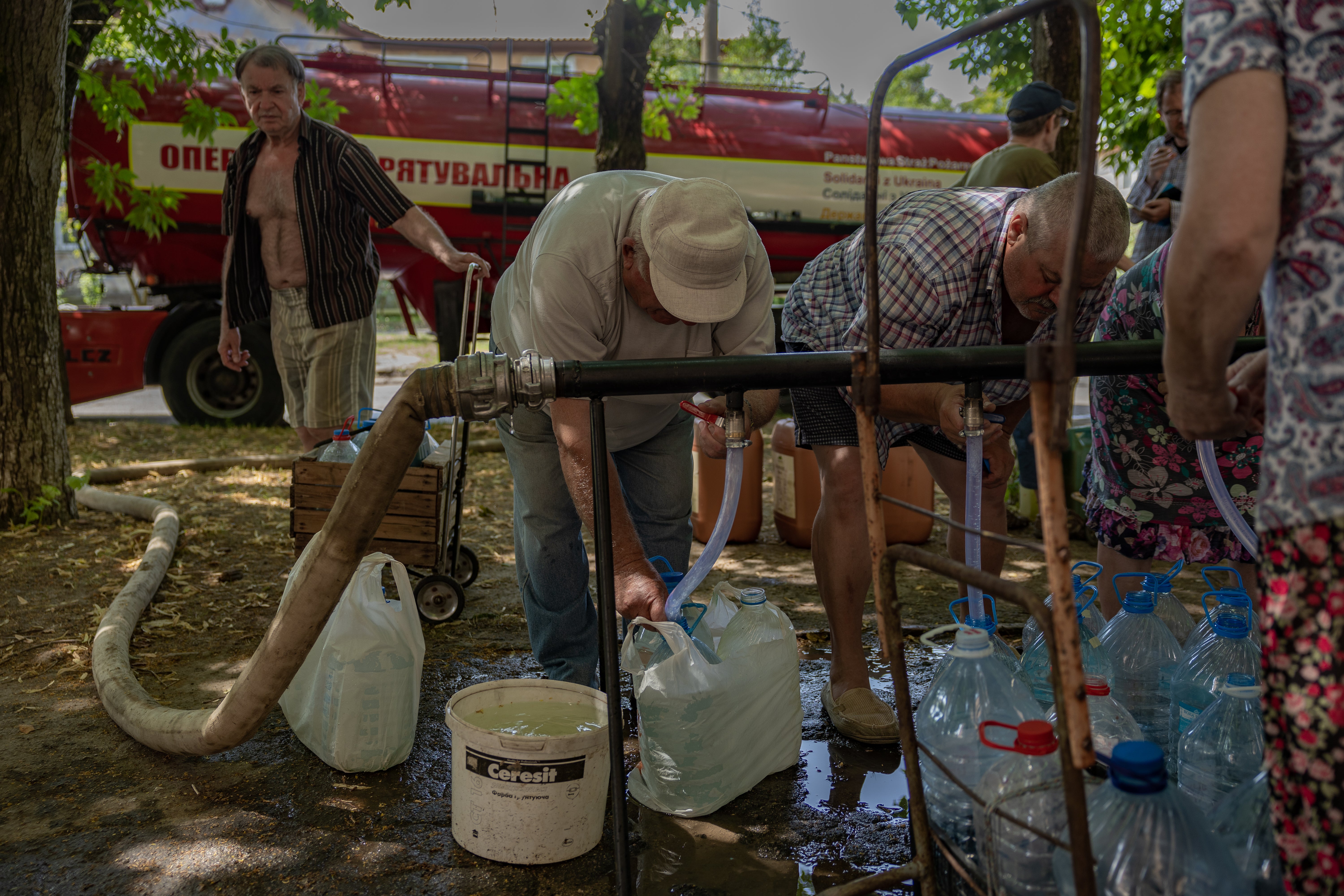
International efforts led by the United Nations nuclear watchdog to establish a demilitarised zone around it have failed so far. There were additional concerns in June when the Kakhovka dam blew up as the plant relies on the reservoir for its cooling system.
On Wednesday experts from the International Atomic Energy Agency (IAEA) based at the plant said they had yet to observe any indications of mines or explosives being laid. However, they admitted they needed more access to the rooftops of the reactor, as well as the turbine halls and cooling systems to know for sure.
IAEA’s chief Rafael Grossi, who visited the plant last month, said on Wednesday his team therefore “remain extremely alert”.
“There is a lot of combat, there is contact there very close to the plant, so we cannot relax,” he added.
In Ukraine, emergency workers have held multiple rounds of drills to prepare for a potential release of radiation.
According to the country’s emergency services, in case of a nuclear disaster at the plant, approximately 300,000 people would be evacuated from the areas closest to the facility.
Among them would be the 50,000 people left living in the war-blasted city of Nikopol, an industrial city that lives in the shadow of the plant.
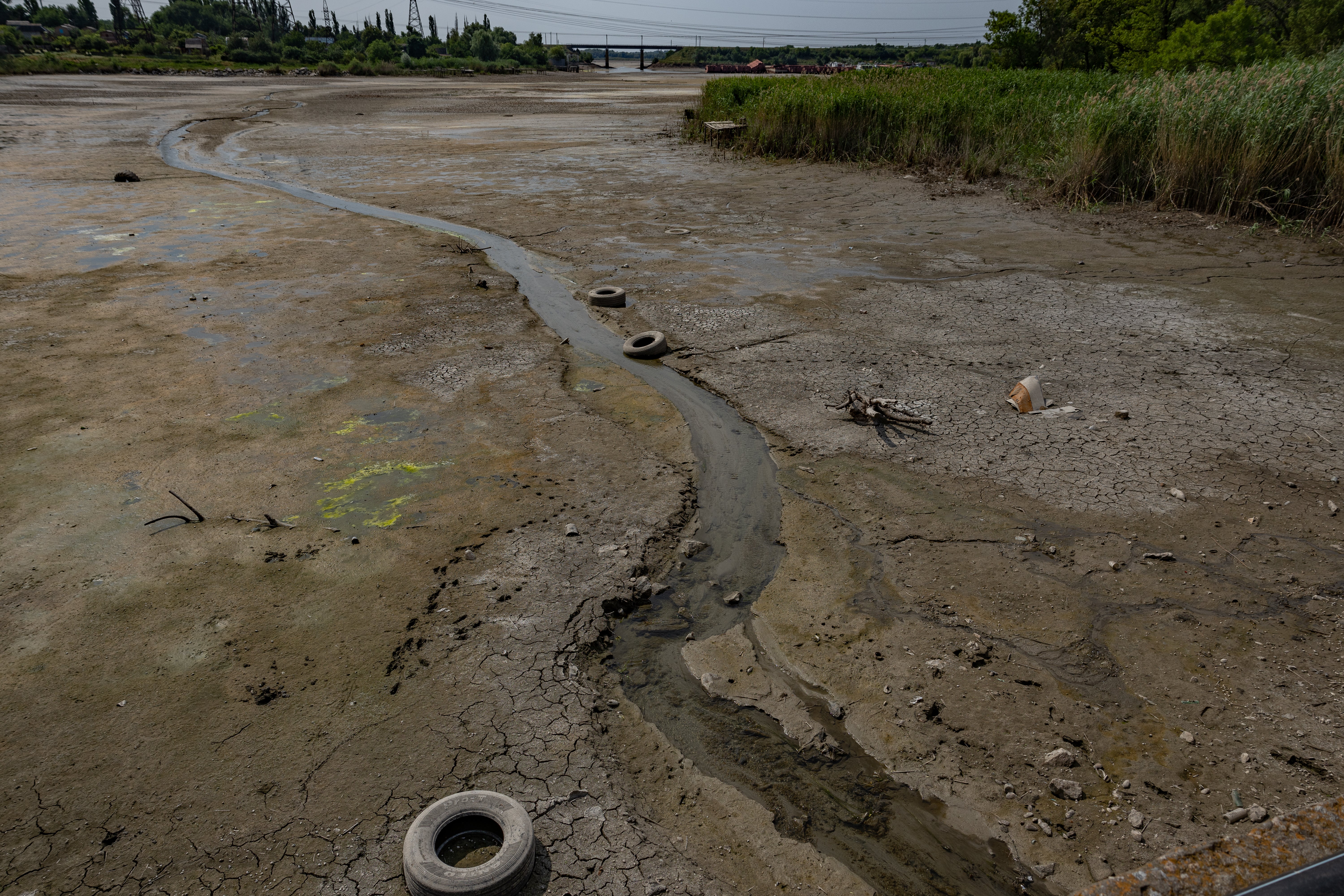
There the residents who have stayed put, are already dealing with a multi-layered humanitarian crisis.
There is no water in the city after the Kakhovka dam was blown up draining the reservoir the city relied on. Families are forced to risk getting shelled to queue with buckets for water delivered by the city’s firefighters.
“Coming here to get water is actually quite dangerous because the Russians often target the water queues,” says Ludmilla, 58, as she fills up large water bottles from a fire-truck supply. It’s been two weeks since there was anything in their taps at home.
“They shoot and destroy something every day, shelling is happening every day.”
Constantin, 22 who works for country’s the largest energy operator, says the news about the Zaporizhzhia power plant added to the worry and misery.
“Now we feel like there is a bigger chance of this happening,” he adds referring to Zelensky’s comments.
“But where can everyone go?
Oleksandr, 65, who is retired and was also queuing up to get water, echoes his words.
If this happens it will not be a local or even a national incident, it will be a global one
“The only reason we are still here is because we have nowhere else to go,” he adds.
Nikopol’s mayor says 70 civilians have already died in the mass shelling of the city, which has destroyed 4,000 buildings.
That will be small fry if the power plant just a few kilometres away blows up.
Taras Tyshchenko says his teams had already distributed potassium iodide tablets to the local community around the plant, but the extent of the damage, if the plant blows up, won’t be known until it happens.
“If this happens it will not be a local or even a national incident, it will be a global one. It will have a significant impact on the environment not only in Zaporizhzhia region, Dnipro region, or in Ukraine as a whole,” he predicts.
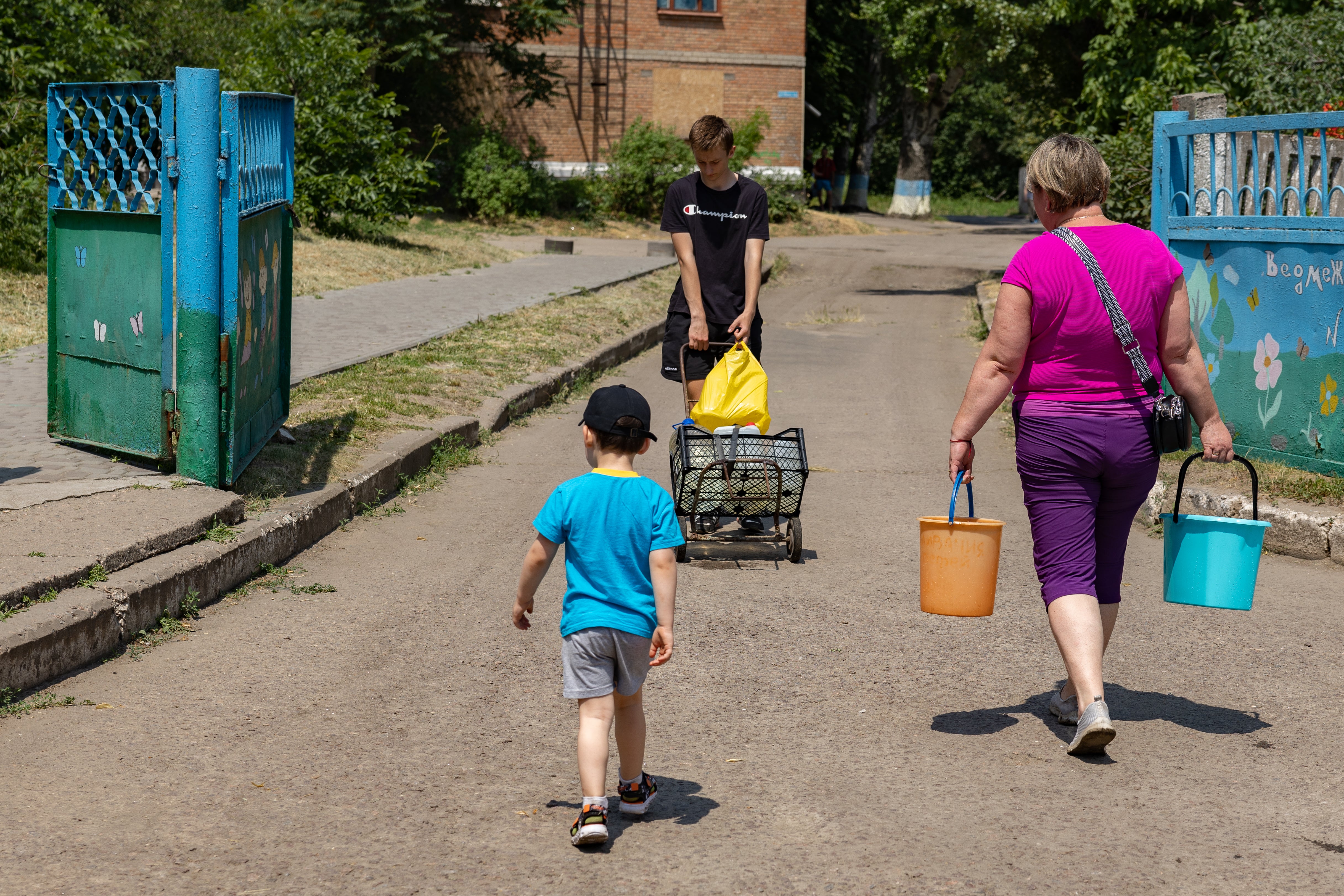
“This will be an incident that can affect all our neighbouring countries, especially those that have access to the Black Sea,” as it may be contaminated.
No one truly knows the extent of the damage if the nuclear plant blows.
The International Institute for Strategic Studies said last week that all six reactors are in cold shutdown at the moment, due to precautionary steps taken by the IAEA.
That would mitigate worst-case disaster scenarios like a massive Chernobyl-type incident where most of Europe and even swathes of Europe are contaminated.
Although the think tank noted wind might blow some amount of the radiation toward Russia.
Nikopol being so close will likely be impacted, whatever happens.
“The city keeps living, working, paying taxes, people keep having to get their salary,” the city’s mayor adds defiantly.
“Yes it’s bad, yes we don’t have Kakhovka reservoir. Yes it’s a catastrophe, but life keeps going and Ukraine goes forward to our victory.”




Join our commenting forum
Join thought-provoking conversations, follow other Independent readers and see their replies
Comments